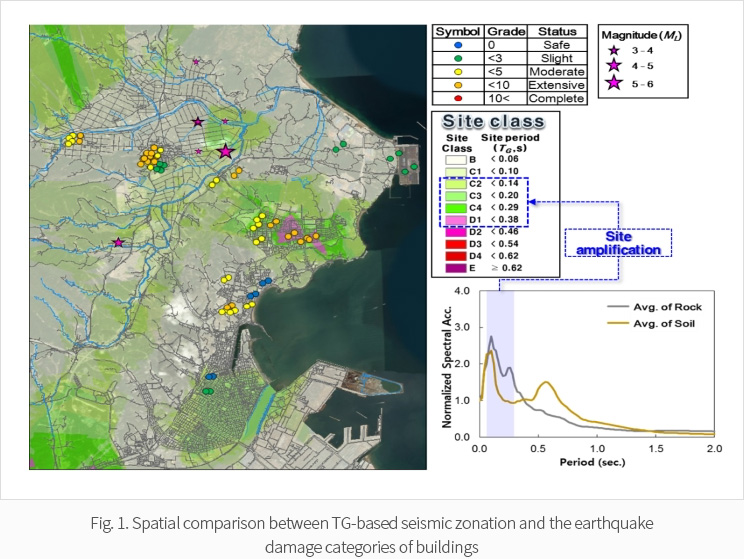
The 2017 Pohang earthquake (M 5.4) was South Korea's second strongest earthquake in decades, and it caused the maximum amount of damage in terms of infrastructure and human injuries. As the epicenters were located in regions with quaternary sediments, which involve distributions of thick fill and alluvial geo-layers, the induced damage was more severe owing to seismic amplification and liquefaction. Thus, to identify the influence of site-specific seismic effects, a post-earthquake survey framework for rapid earthquake damage estimations, correlated with seismic site effects, was proposed and applied in the region of the Pohang earthquake epicenter. Seismic zones were determined on the basis of ground motions by classifying sites using the multivariate site classification system. Low-rise structures with slight to moderate earthquake damage were noted to be concentrated at softer sites owing to the low focal depth of the site, topographical effects, and high frequency range of the main shocks.
